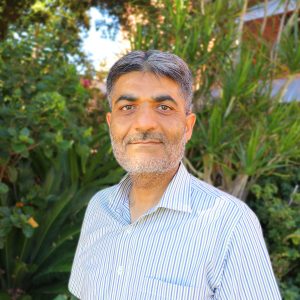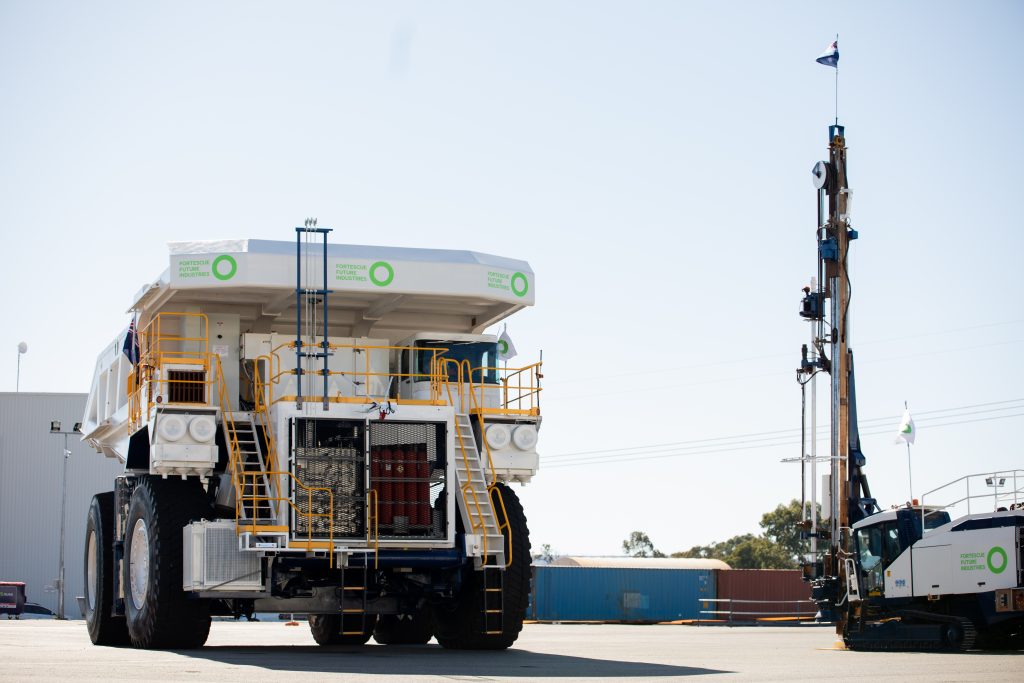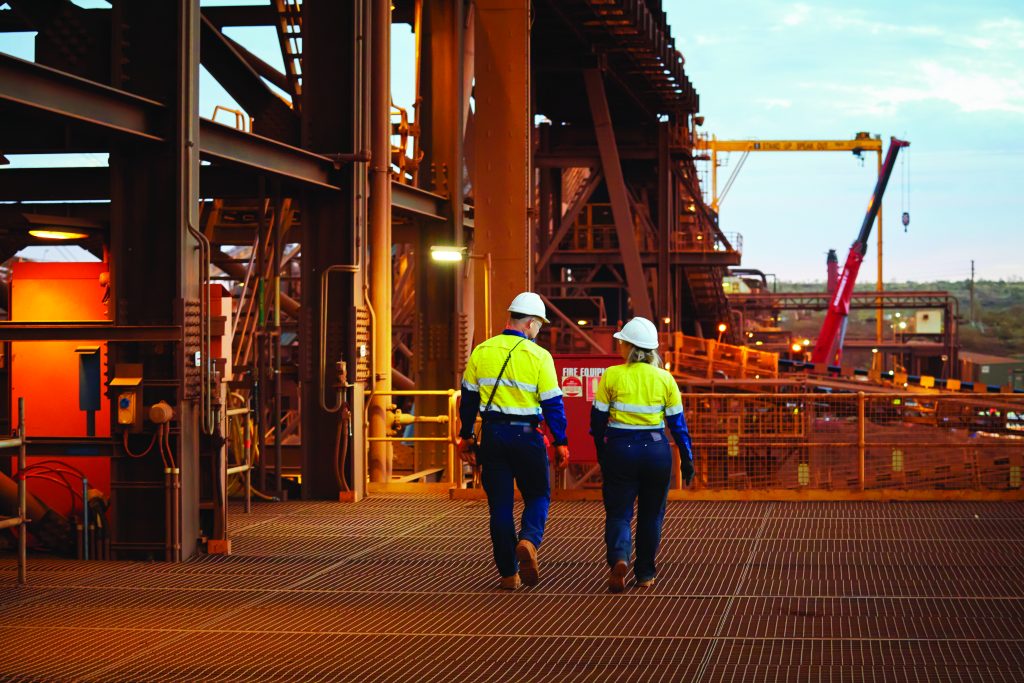The country’s mining industry is beset by workforce shortages. How can we reverse the trend?
Mining engineers are crucial to a renewable energy future. But the industry is plagued by negative perceptions, such as fossil fuel dependency, physically demanding and hazardous working conditions, lack of workforce diversity, and having to live in remote towns that lack sophisticated infrastructure.
This has led to a 63 per cent drop in enrolments in Australian mining engineering courses from 2014 to 2018, according to a report by management consulting firm McKinsey.
Beyond our shores, the same trend is reflected in a 39 per cent decrease in enrolments in the United States between 2015 and 2020.
The same McKinsey report tells us that 71 per cent of mining leaders are finding that the talent shortage is holding them back from delivering on production targets and strategic objectives. In 2022, some 86 per cent of industry leaders said that it was harder to attract and retain talent than just two years earlier.
This is acutely felt in Western Australia where mining supports three out of 10 jobs in the state. So how do we reverse this trend to ensure we have enough mining engineers to deliver the coming energy transition?
Some of Western Australia’s leading experts shared the ways they believe the industry is narrowing the gap between perception and reality of mining in the 21st century.
A shaft of light
For Associate Professor Waqar Asad MIEAust, deputy head of Curtin University’s mining engineering school, the transition to a renewable energy future requires the involvement of young people who are passionate about environmental management and sustainable development.

“The mining industry plays a pivotal role in fulfilling the community’s commitment to a sustainable future by achieving net zero targets,” he told create. “To meet the demand for electric vehicles and energy storage batteries alone, we need to open approximately 250 new copper, nickel, lithium and cobalt mines.”
While the focus of Australian mining is undoubtedly pivoting towards renewables, Asad points out that even Australian metallurgical coal is essential for steel production, which is in turn vital for renewable energy infrastructure such as solar and wind power generation.
As someone at the coalface, so to speak, he believes that there are steps that can be taken to reverse the decline in mining engineering enrolments and make the profession more appealing to young people.
The first step is for the industry to “actively collaborate” with both high school and tertiary educational institutions to “emphasise the critical role of mining in supplying commodities essential for achieving net zero emission goals”.
The mining industry also needs to showcase its commitment to community engagement and sustainability throughout the entire mining lifecycle, Asad said, “from resource discovery to mine closure, including strong partnerships with indigenous communities worldwide as well as implementation of policies that deliver wellbeing and satisfaction of Indigenous employees”.

Practical blueprint
Curtin University’s mining school has had considerable success targeting international students for Masters of Mining Engineering courses, with enrolments tripling since 2019. Graduates have also had a positive employment outcome rate of greater than 90 per cent.
Asad believes that they can do even better by encouraging industry to engage with students at an even younger age, offering summer internships for first-year engineering students.
“With few exceptions, current practice is to offer summer internship opportunities from second year onwards – that means for students who already chose mining engineering as their career,” he said.
As well as exposing students yet to specialise to the benefits of mining engineering, “summer internships during the first year would assist in illustrating the potential for career advancement and competitive salaries in the field”.
Collaborating with industry to provide practical mining experience is also vital, including field visits, industry-led workshops and research projects.
“Offering attractive scholarships and grants during first-year engineering programs will make the profession attractive for a larger cohort of students,” Asad said.
Additionally, the industry needs to highlight the global nature of mining and the opportunities it offers for international experience.
“Global mining companies may demonstrate projects and collaborations happening around the world as well as emphasise the diverse cultural and geographical contexts in which mining engineers work.”

Using the contributions from a multidisciplinary and diverse workforce will also help to make the industry attractive to young people, such as presenting them with opportunities to safely use cutting-edge innovations like virtual and augmented reality in process simulations and remote monitoring of operations.
“Data analytics and machine learning algorithms play a pivotal role in optimising the planning and design of mining operations, predicting equipment availability and failures, and achieving efficiency in resource extraction,” Asad said.
“The design and implementation of innovative technologies require professionals from diverse backgrounds, and stakeholders must join hands to attract a workforce prepared to make a positive impact on the future of the mining industry.”
Industry response
Rebecca Tomkinson, CEO of the Chamber of Minerals and Energy of Western Australia (CME), said that the industry is aware of blockages in the skills pipeline, and that there is “no single answer to addressing the sector’s strong requirement for more mining engineers”.

To this end, the chamber is engaging with the state’s education sector to show students the wealth of career opportunities available to them.
“CME’s Digital Technologies Program, which is running in schools around the state from pre-primary to Year 10, offers an introduction to automation and data science and how those skills are put to use in mining and resource roles, including by mining engineers,” she said.
Another initiative called The Resources Industry Training Council, a joint venture between CME and Australian Energy Producers, is working with career advisors in Western Australia’s high schools to showcase how engineering jobs in mining will contribute to efforts to achieve net zero.
“Major member company operations often play host to first-year undergraduate students undertaking more general science degrees, with an aim of providing a boots-on-the-ground introduction to careers in mining-specific occupations,” she said.
“Curtin University’s WA School of Mines in Kalgoorlie should also be recognised for the outstanding work it does in delivering mining engineering qualifications in the state.”
One factor often cited by young people reluctant to go into mining is working in remote regions in fly-in, fly-out (FIFO) conditions. Tomkinson said that in order to address this, over the past decade many mining firms have introduced more flexible and family-friendly roster arrangements, and have focused on innovations and improvements that can help regional and remote locations feel like a “home away from home” for those who must travel to work there.

And the mining industry will continue to be a vital economic force, both in Western Australia and the wider country.
“In 2022-23 alone, the combined activities of CME member companies contributed $132 billion to the national economy, supported three out of every 10 jobs in Western Australia and benefited more than 15,000 local businesses and 1300 community organisations in our state,” Tomkinson said.
“We’ll still be talking about these kinds of figures in the future but they will also be in the context of major contributions to global decarbonisation ambitions. Add to that the STEM talent pipeline Western Australia will be producing as the roles of the future become the reality of today.”
Sustainable mining future
Susan Kreemer Pickford FIEAust EngExec, Engineers Australia’s General Manager for Western Australia, said that contrary to some community perceptions, mining is critical to decarbonisation.

Beyond supplying the raw materials for the energy transition and value-adding of raw materials, she told create that there are myriad opportunities for young professionals to use climate smart engineering in the mining sector.
“Applying circular economy principles, we’re now more focused on designing end-of-life decommissioning to be able to re-use materials followed by mine site rehabilitation,” she said.
“Therefore, there’s a need for people who are invested in responsible mining practices to enter the sector and support the delivery of a sustainable outcome. An example is increasing the take up of renewable energy for electrification.”
One area the sector is exploring is how it can better leverage raw materials and mining expertise to move up the value chain, starting in mineral processing and focussing on all processes, and precursors, prior to mass manufacturing.
Local processing and manufacturing can not only help to reduce transportation costs and carbon emissions, but it can address some of the supply chain issues we experienced during the pandemic and will likely occur as the world decarbonises.
“We could focus on assembly in niche applications, including those designed and built for Australia’s climate, remote communities and defence needs,” Kreemer Pickford said, “as well as concentrate on safety standards and ESG credentials as a competitive advantage.”
While the current needs of the energy transition are paramount, she believes the emerging STEM generation can lead the charge.
“A really exciting development for the future of mining engineering is looking at sustainable practices for how we will potentially mine in space,” she said. “We can take a lot of what we’ve learned from mining in remote areas and harsh conditions and apply it to mining practices beyond Earth.
“Furthermore, we have an ethical duty to take what we’ve learned from mining here and apply it to the space environment.”



